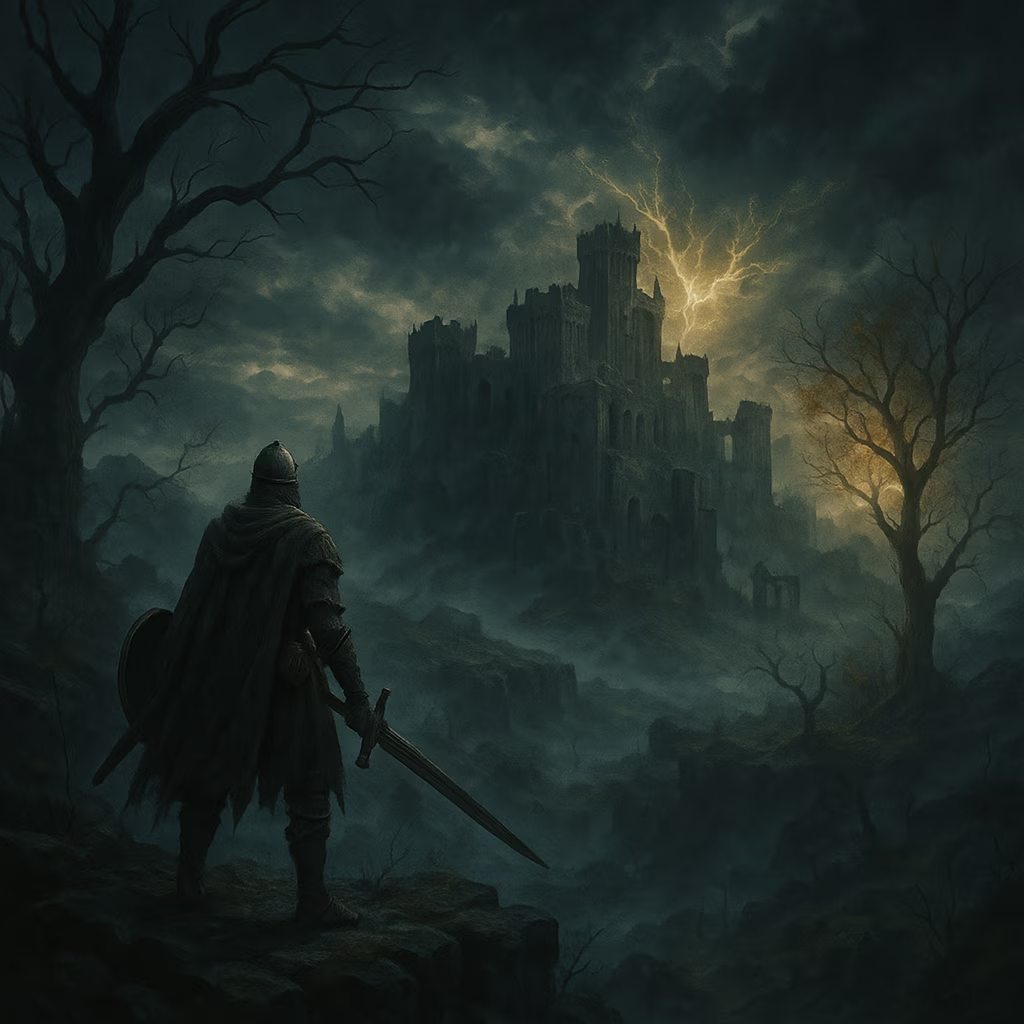Wylder's Skins: Fashion in Nightreign's Shadows
Elden Ring Nightreign captivates players with its unique character skins, transforming the Wylder into a nostalgic icon of FromSoftware's legacy.
Oh, the sheer existential horror of stepping into the Lands Between without a single slider to tweak your jawline! Elden Ring Nightreign denies players the catharsis of full character creation, instead shackling them to premade champions like the stalwart Wylder. Yet, this jack-of-all-trades wielder of comically oversized greatswords becomes a canvas for sartorial expression through unlockable skins, transforming from a rugged survivalist into a walking monument to FromSoftware's legacy. It’s fashion souls, distilled into a frantic dance of cloth, metal, and nostalgia—where every new outfit feels like unearthing a sacred relic drenched in lore and purple-trimmed melodrama. The weight of these visual transformations crushes mere gameplay, becoming an obsession as vital as any dodge roll
The Humble Beginnings: Default Skin
Behold the Wylder in his unadorned glory—a masterpiece of practical despair! His default ensemble screams "I scavenged this from a damp crypt," blending frayed leather, modest cloth, and strategically placed metal plates that whisper, "Please don’t stab me here." Those absurd winged horns on his helm? Pure Norse bravado, clashing beautifully with the grim reality of getting slapped by a tree spirit. And let’s not ignore the arm-mounted crossbow bolted to his left limb—a clunky, glorious reminder that style never sacrifices function. One can’t help but feel a pang of affection for this battered aesthetic; it’s the armor equivalent of a trusty, stained coffee mug. But oh, how quickly boredom sets in! After the fiftieth death to the same ulcerated tree spirit, those frayed edges start feeling like a personal insult. Is this all there is?
Embracing the Edge: Darkness Skin
Unlocked after two grueling expeditions, the Darkness Skin is where Wylder truly finds his inner goth. Gone are the whimsical helm wings, replaced by a flowing black cloak with a purple trim so vivid it practically bleeds malevolence. Every inch of leather and metal drowns in inky shadows, gunmetal grey accents gleaming like cursed moonlight. Those sporadic purple splatters? Chilling. They mimic Night Corruption’s vile touch, making the wearer look less like a hero and more like a villain mid-monologue. Subjectively? It’s deliciously over-the-top. Donning this feels like mainlining liquid edge—a costume for players who want their greatsword swings to whisper, "I brood harder than you." Yet, a nagging thought lingers: Is this darkness transformative, or just a phase before the Abysswalker’s call?
Legend Reforged: Abysswalker Skin
Completing the "Night Aspect" expedition grants Wylder the right to wear Artorias’ iconic armor—the Wolf Knight set from Dark Souls. This isn’t mere cosplay; it’s a spiritual inheritance. The battered, wolf-emblazoned plate, the tattered blue cape—it all screams tragic heroism. Fighting a Nightlord in garb once worn by Gwyn’s own knight? The irony is thicker than the armor’s steel. For lore devotees, wearing this skin while uncovering Wylder’s fate evokes bone-deep shivers. Does history repeat itself? Will this hero, too, succumb to the abyss he battles? The skin’s weight isn’t just physical—it’s emotional, a constant, haunting whisper of Artorias’ sacrifice. One almost feels unworthy zipping it up.
Royal Might: Lion Knight Skin
After conquering Night Aspect, Wylder can ascend to regal heights with the Lion Knight armor—a.k.a. Dark Souls 2’s legendary Faraam Set. This isn’t clothing; it’s architecture. Layers of gleaming metal, a luxuriant fur cloak, and that unmistakable helm depicting a dragon-slaying god (Faraam himself, perhaps?) scream "divine right to crush skulls." It’s staggeringly heavy, both visually and metaphorically. Wearing it transforms Wylder from a scrapper into a demigod—a walking cathedral of war. Yet, amidst the grandeur, existential questions gnaw. Does this armor honor heroes... or bury them? That dragon-slaying motif feels less triumphant and more like a eulogy carved in steel. The fur tickles, though.
Gilded Illusions: Dawn Skin
Unlocked post-expedition, the Dawn Skin bathes Wylder in Leyndell’s false gold. A longer cloak with gilded trim drapes elegantly, while every scrap of metal gleams with ostentatious wealth. Even the helm’s wings stretch taller, thinner—like desperate fingers grasping for sunlight. But look closer! Those golden stains on the tunic? They resemble spilled cheap wine more than royal embroidery. It’s a skin of fragile opulence, beautiful yet faintly ridiculous. Strutting through swamps in this feels like wearing a tuxedo to a bar brawl—delightfully absurd, yet somehow tragic. Is this gilded veneer a tribute to knights... or a mockery of their faded glory? The answer might tarnish faster than the finish.
Heart Stitched in Thread: Remembrance Skin
Completing Wylder’s questline gifts players the Remembrance Skin—a crushing anticlimax. At first glance? It’s the default outfit plus a single, tiny broach pinned to the cloak. That’s it? Yet, reading the accompanying journal—revealing the broach as his sister’s final gift—unlocks a tidal wave of pathos. This isn’t armor; it’s a heartbeat. That minuscule accessory symbolizes every hope, every failure, every raw scream into the void. Wearing it feels intimate, vulnerable. Why lavish gold or fur when resolve is the truest armor? It’s FromSoftware’s cruelest joke: the most powerful skin demands no pixels, only empathy. Does love forge stronger protection than steel? The silence is deafening.
Ultimately, these skins transcend mere cosmetics. They’re battle standards, memorials, and psychological crutches—wrapped in leather, fur, and regret. Does the Abysswalker’s legacy overshadow Wylder’s own story? Does the Remembrance Skin’s simplicity outshine the Lion Knight’s grandeur? And that persistent purple trim on the Darkness ensemble... does it hint at corruption, or is it just fabulous? The threads of identity fray with every swap, leaving players tangled in questions only fashion—and fatalism—can answer.
